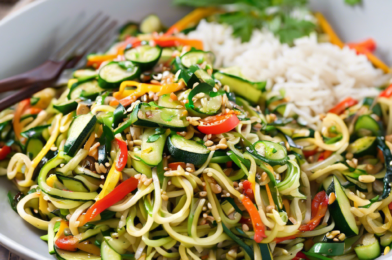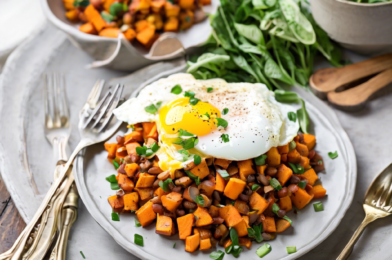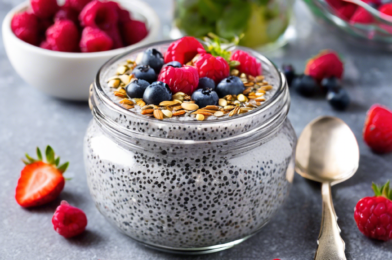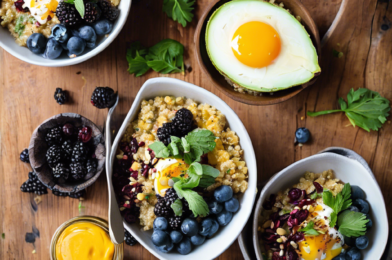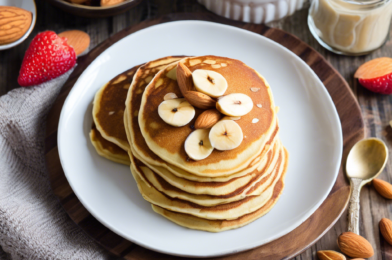When I first stumbled upon the Zucchini Noodle Stir-Fry recipe, I was a bit skeptical. Could zucchini noodles really hold their own against traditional pasta? However, one bite was all it took to win me over. The dish is a delightful blend of flavors and textures, and it quickly became a family favorite. The zucchini noodles offer a light, fresh base that perfectly complements the array of vegetables and sauces. My family, who are not always the biggest fans of vegetables, couldn’t get enough of it. It’s a meal that feels indulgent while still being incredibly healthy, making it perfect for weeknight dinners or even special occasions.
Ingredients
To create the perfect Zucchini Noodle Stir-Fry, you will need the following ingredients:
- 3 medium zucchinis, spiralized
- 1 tablespoon olive oil
- 2 cloves garlic, minced
- 1 red bell pepper, sliced
- 1 cup broccoli florets
- 1 cup sliced mushrooms
- 1 cup snap peas
- 1 carrot, julienned
- 2 tablespoons soy sauce
- 1 tablespoon sesame oil
- 1 tablespoon oyster sauce
- 1 teaspoon grated ginger
- Salt and pepper to taste
- Sesame seeds and chopped scallions for garnish
Instructions
Follow these steps to make the Zucchini Noodle Stir-Fry:
- Prepare the zucchini noodles: Use a spiralizer to cut the zucchinis into noodles. If you don’t have a spiralizer, you can use a julienne peeler or buy pre-spiralized zucchini.
- Cook the vegetables: Heat olive oil in a large pan over medium heat. Add the garlic and sauté for about 30 seconds until fragrant. Add the red bell pepper, broccoli, mushrooms, snap peas, and carrot. Stir-fry the vegetables for 5-7 minutes until they are tender-crisp.
- Mix the sauce: In a small bowl, combine soy sauce, sesame oil, oyster sauce, and grated ginger. Stir well to blend the flavors.
- Add the zucchini noodles: Add the zucchini noodles to the pan with the vegetables. Pour the sauce over the noodles and vegetables, tossing everything together to coat evenly. Cook for another 2-3 minutes until the zucchini noodles are just tender but not mushy.
- Season and serve: Taste and adjust seasoning with salt and pepper as needed. Transfer the stir-fry to serving plates and garnish with sesame seeds and chopped scallions. Serve immediately and enjoy!
Nutrition Facts
This recipe serves 4 people, with each serving containing approximately 180 calories. It’s a nutrient-dense meal that offers a good amount of vitamins and minerals without being too heavy on calories.
Preparation Time
The Zucchini Noodle Stir-Fry is a quick and easy meal to prepare, taking about 15 minutes for preparation and another 15 minutes for cooking, totaling around 30 minutes from start to finish.
How to Serve
Here are some ideas on how to serve this delicious stir-fry:
- Serve it as a main dish, adding some grilled chicken or tofu for extra protein.
- Pair it with a side of steamed rice or quinoa to make the meal more filling.
- Enjoy it with a light salad for a refreshing and balanced meal.
- Top it with a sprinkle of crushed peanuts for a crunchy texture.
- Serve it with a side of miso soup for a complete Asian-inspired meal.
Additional Tips
Follow these tips to enhance your Zucchini Noodle Stir-Fry experience:
- Tip 1: Make sure not to overcook the zucchini noodles. They should be tender but still have a bit of a bite to them.
- Tip 2: Feel free to experiment with different vegetables based on what you have on hand or what’s in season.
- Tip 3: For added heat, consider adding a dash of chili flakes or a splash of sriracha to the sauce.
- Tip 4: If you prefer a thicker sauce, add a teaspoon of cornstarch mixed with water to the sauce before adding it to the stir-fry.
- Tip 5: For a richer flavor, try using toasted sesame oil instead of regular sesame oil.
FAQ Section
Here are some frequently asked questions about the Zucchini Noodle Stir-Fry:
- Q: Can I make the zucchini noodles in advance?
- Q: What if I don’t have oyster sauce?
- Q: How can I prevent the zucchini noodles from getting watery?
- Q: Is this recipe gluten-free?
- Q: Can I add protein to this dish?
A: Yes, you can spiralize the zucchini up to a day in advance. Store them in an airtight container in the refrigerator until ready to use.
A: You can substitute oyster sauce with hoisin sauce or leave it out entirely if you prefer a lighter dish.
A: After spiralizing, lightly salt the zucchini noodles and let them sit for 10 minutes, then pat dry with a paper towel to remove excess moisture.
A: To make it gluten-free, use tamari or a gluten-free soy sauce instead of regular soy sauce, and ensure that your other sauces are also gluten-free.
A: Absolutely! Add cooked chicken, beef, shrimp, or tofu to increase the protein content and make it a more satisfying meal.
